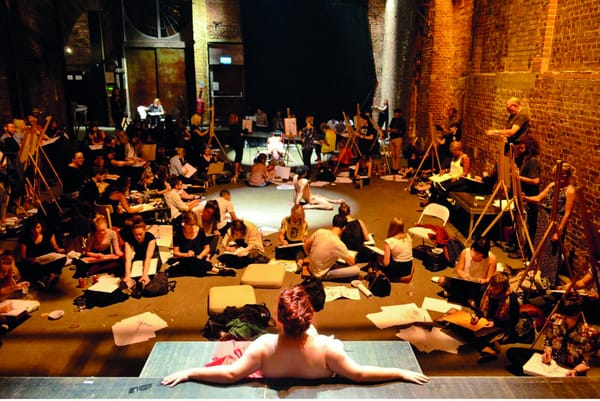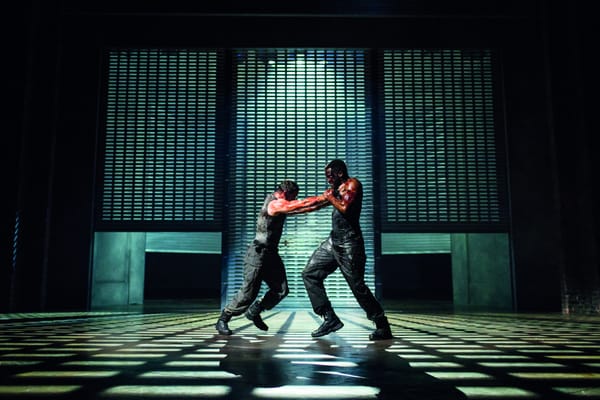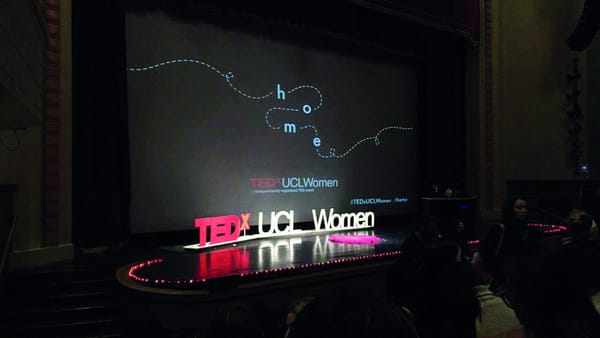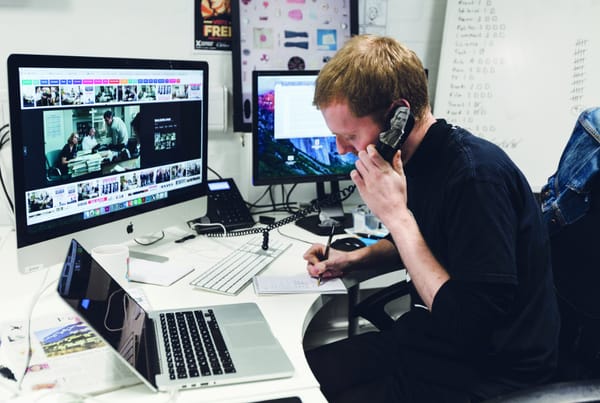2017 in review: the Arts editors take you through the best exhibitions and shows in London this year
Arts editors Adam Gellatly, Jingjie Cheng, and Indira Mallik give their highlights of the year

It’s a strange feeling, when you feel like you know an artist, that you have a reasonable understanding of his work, to then discover him afresh. But exactly what I experienced at Tate Britain in February, when the gallery put on the largest ever arrangement of Hockney’s work.
David Hockney, The Exhibition, followed the artist’s work from his earliest days as a student to his 2016 iPad drawings. Here, backlit screens display not only the final product but also the evolution of the drawings in the form of screen-captured videos. It’s rare to have the opportunity to see any artist’s mind in action, let alone one of Britain’s great modern painters.
Of course, many of Hockney’s most famous works were on display: A Bigger Splash (1967), American Collectors (1968), Mr and Mrs Clark and Percy (1970-1), Pearblossom Hwy. (1986). But the real enjoyment came from discovering for the first time – along with, I imagine, everyone else in the room – his smaller pieces and sketches that later found life in his masterpieces. Stumbling upon a small piece of triangular graph paper, on which Hockney had sketched a crude palm tree and car – aptly titled The Great Pyramid with Palm Tree and Car (1963) – only to later realise it served as the draft for his great Great Pyramid at Giza with Broken Head from Thebes later that year instilled in me a boyish sense of adventure. I was essentially an art detective for a few hours, which means I was essentially Inspector Clouseau. Pretty cool, huh?
Where do I begin with my theatre highlight of the year: Roman Tragedies was an experience like no other Let me set the scene: Enobarbus, Mark Antony’s closest confidant has just betrayed the great Roman general. So overcome with grief is he with his actions, he dcides to take his own life. His cries and pleas for forgiveness are translated from Dutch to English courtesy of surtitles. A cameraman follows him as he stumbles across the stage; his lamenting projected above the set for the audience gawk over.
Suddenly, he exits stage left and proceeds to bound up the stairs, past the stalls, cameraman in pursuit. The live video feed continues as Enobarbus meanders out of the Barbican onto the road. As he continues to confess his sins, a member of the public appears on the footpath. He is carrying his shopping and stops dead at the sight of man rolling in the tarmac, yelling in Dutch. The camera zooms in on the perplexed face of the passer-by, to the joy of every member of the audience. Eventually, Enobarbus returns to the stage, still in hysterics, where he proceeds to end his suffering. “Enobarbus 81 – 31 BC” reads the caption, as a bird’s-eye view of the general’s body is met with raucous applause. Going into this one, I wasn’t sure what to expect. A 6-hour-long, modern day adaptation of Coriolanus, Julius Caesar, and Antony and Cleopatra, all in Dutch (with English surtitles, thank God), and the ability to walk onto the stage during the performance. So, just a little strange then.
“So much occured during the six hours, it is impossible to praise every superbly executed element”
It was surreal, no doubt, but Roman Tragedies was also the most incredible theatrical performance I have ever had the joy of witnessing. The adaptations were set in a sprawling political conference room, with declarations of war framed as heated debates. TV screens were adorned with footage from real world news, and rolling headlines filled the audience in on action that has had to be skipped in the interest of time. Cameras – both manned and stationary - followed the actors wherever they went, providing an essential perspective into the action when the characters find themselves buried in a sea of audience members. It was like watching a particularly intense episode of The Thick of It, live.
So much occurred during the six hours, it is impossible to praise every superbly planned and executed element. Nor was it possible to witness them all; each audience member chose to view the show differently, and each audience member’s experience was unique.
Toneelgroep Amsterdam stage performances of Roman Tragedies at various venues every year. If you ever get the opportunity to see it for yourself, do not (do not!) pass it by.
Adam Gellatly

This year saw the arrival of several blockbuster shows and exhibitions, most notably Angels in America, which undoubtedly was the best show I’ve seen this year by far. Lavishly extending across a two-part show, with regular tickets sold out days after they were released, Angels in America was certainly the National Theatre’s flagship show of 2017. Not to mention Andrew Garfield’s incredible performance. A production of Tony Kushner’s AIDS drama, one that champions a progressive society and rejects marginalisation, resonates even more in a difficult year like this, following 2016.
“Angels in America, lavishly extending across two parts, is the undoubtedly the best show of the year”
As far as art exhibitions are concerned, Basquiat: Boom for Real was an adventurous undertaking by the Barbican, significant because it is the first time that the young artist’s (he died age 27 of a heroin overdose) body of work has been shown all in one place. Revolving around different aspects of his life and the post-punk, hip-hop, street art culture of which his work is a part of, the exhibition is a snapshot of Manhattan in the last 1970s from a unique perspective, in a riot of colours and ideas.
Speaking of colours, Casanova was a brilliant ballet by the Northern Ballet, which travelled across the UK from Leeds (where they are based) to London to Edinburgh. Ostentatious and grand, this ballet pulled out all the stops on a magnificent set, colourful costumes and intricate props. The Northern Ballet specialises in ballet that tells a story – and indeed, this production told the epic story of seductive Casanova very well, weaving complex visual narration with perfect choreography.
This year also saw several transfers to the West End of successful shows by the National Theatre and Royal Court – The Ferryman was transferred after an immensely successful sold out run at the Royal Court. I was surprised to see it doing so well and thriving on the West End, given its gravity and socio-political themes – not a light-hearted or heartwarming story by any measure. Nevertheless, I enjoyed it for being just that: serious, and tackling a problematic history with sensitivity. Its massive cast was delightful, as were the real animals and babies on stage. Nothing could prepare one for the shock of the last scene. Likewise, Oslo and Beginning were successful shows at the National Theatre – Oslo is already at the West End, and the sold-out Beginning will begin its stint at the Ambassadors Theatre in January next year.
I learnt the most from the Dalí/Duchamp retrospective that is still running at the Royal Academy of Art. Having studied both before and being a fan of Dalí, I was interested to know what they had in common. Perhaps this is a late realisation, but I learnt that the two were close friends, often staying at each other’s residence when visiting and in regular correspondence. The exhibition was brilliantly curated, with works on similar themes placed next to each other, allowing viewers to clearly see their influence on each other’s art.
In general, this has been a good year for theatre – shows of high standard that continue to run at the West End, blockbuster productions that are relevant to the political climate. But happily, this has also been a good year for art exhibitions – shows that are well-curated and tell a good story. Let’s see if this trend continues in 2018.
Jingjie Cheng
This year was meant to save us from what was generally agreed to be the worst year ever, 2016, and in some ways it has (fewer beloved celebrities went to the Hollywood in the sky), in other ways of course, it’s been equally as terrible – we’ve needed some quality distraction. Pure escapism however has not been on the card, In these increasingly political times, the art world too seems to have gotten more political.
The Tate’s blockbuster show Soul of a Nation: Art in the Age of Black Power, a highlight of the summer, put a spotlight on the entrenched racism of the Civil Rights Era, and particularly with regards to the art created in response to acts of police brutality, drew parallels to the present day – highlighting how far America has come, and how much farther it still has to go. Betye Saar’s assemblages were some of the most powerful of the show – in one particularly haunting piece entitled I’ve Got Rhythm the skeleton of a lynched black man swung in a coffin-like metronome case lined with a (real) newspaper clipping that explained the man’s fate – hanged for refusing to dance. It’s wasn’t all tragedy and rage – Barkley L. Hendrick’s self-portrait on aluminium Icon for My Man Superman was effervescently cool, grounded both in the religious iconography of medieval art and present day pop culture. Its’ irreverence and wry observations were echoed in the works displayed at the Tate Britain for Queer British Art 1861-1967. In equal parts poignant and joyous, the exhibition was an ode to the constantly evolving queer communities and the wider society that has evolved around them. The curation did well to put the works in context, with detailed notes about the artists and the events surrounding the work accompanying each piece, for many of the pieces on display, the stories behind the works alone were worth the price of admission.
“Beginnings marks a triumphant return for David Eldridge”
Just as 2017 has proved a good year for the visual arts, it has been a vintage year for London’s theatres. Special mentions must go to Oslo, the play about the eponymous Accords that brought peace to the Middle East (for a time), and the Norwegian couple that masterminded it, was masterful, managing to weave a tense yarn from a complex bit of political history. We might’ve expected it to be a bit of a thriller, but it was also surprisingly funny, the laugh-out-loud moments elevating an already engaging performance. Beginnings, also at the National Theatre dealt with more personal politics. Now at the Ambassadors Theatre after a swift West End transfer, it signalled a triumphant return for playwright David Eldridge, who, in this achingly funny but wonderfully tender play, explores love in the age of Tinder with a Tennessee Williams-esque incisiveness.
The arts event of the year for me goes to another NT production. Tony Kushner’s ‘gay fantasia’ about the AIDS crisis, Angels in America boasted a star-studded cast in Nathan Lane, Andrew Garfield, and Russell Tovey, but it was their lesser known co-stars, Nathan Stewart-Jarrett and Denise Gough, who stole the show as Belize and Harper respectively – pathos dripped from both their performances – when Garfield’s delivery got a bit too overblown, Stewart-Jarrett grounded it with sublime naturalism. Kushner’s script: meditative, and lyrical – sweeping across time and space, from Heaven to New York to Antarctica, and back again – was a call to arms when it was first performed. The NT’s superb restaging was a reminder that twenty years later, Kushner’s voice is just as potent.
Indira Mallik









